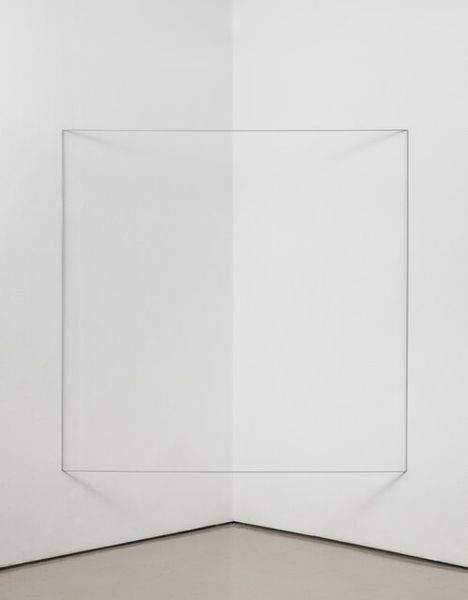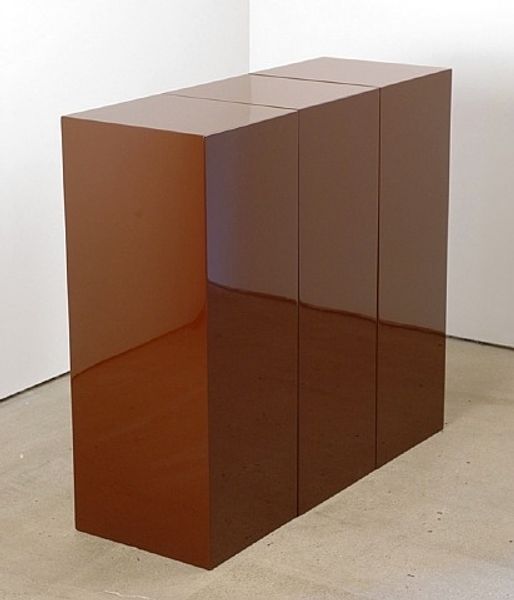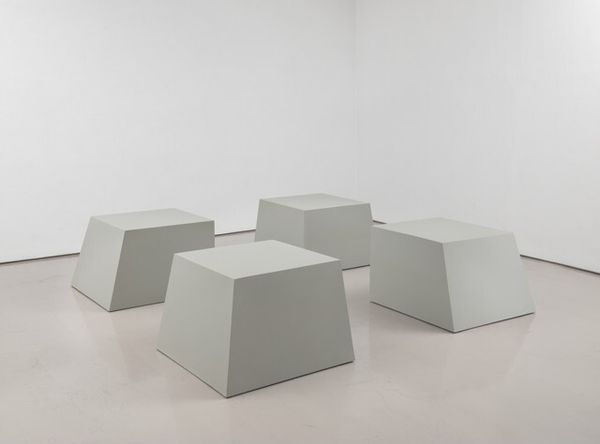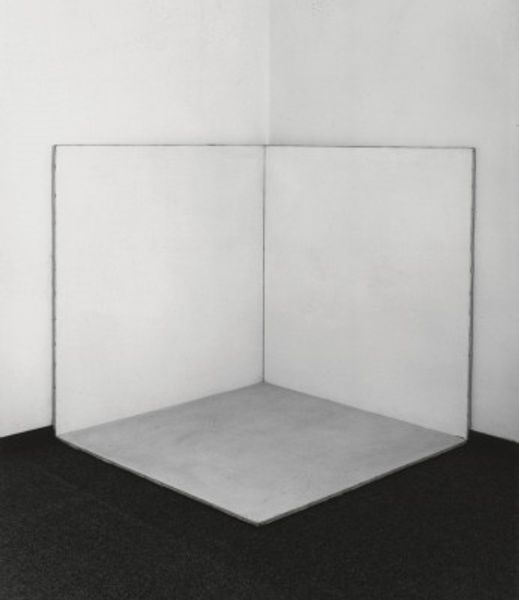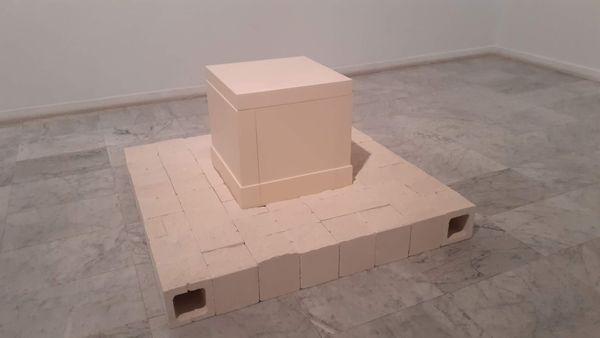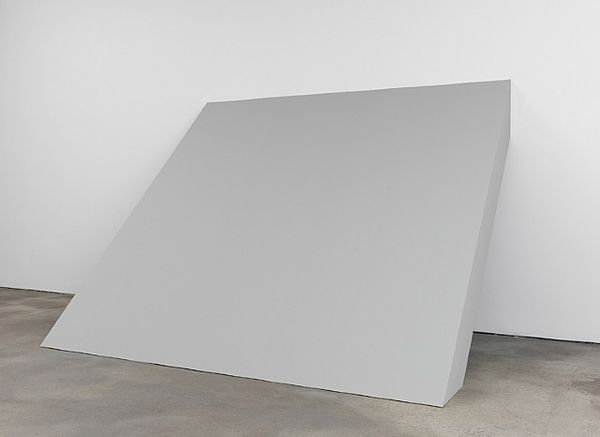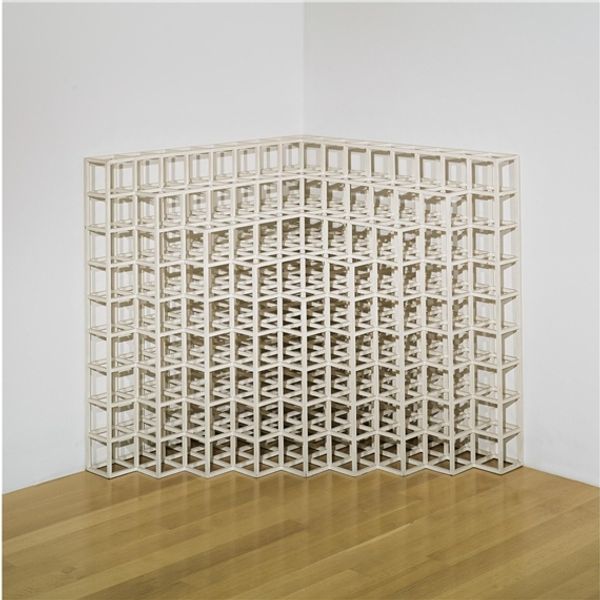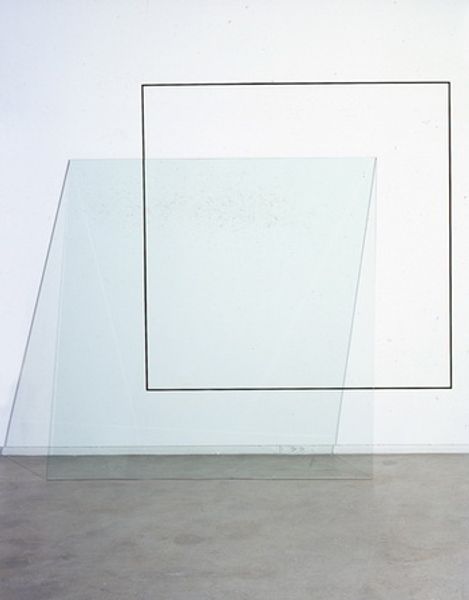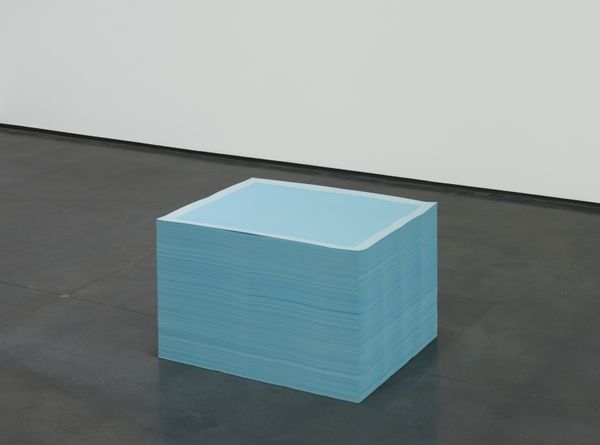
sculpture, wood
#
minimalism
#
geometric
#
sculpture
#
abstraction
#
wood
#
modernism
Copyright: Phillip King,Fair Use
Curator: Welcome. Today we're considering Phillip King's sculpture, "Window Piece" from 1961. Editor: Well, right off the bat, I'm struck by its quietness. It’s this stark white geometric form, a sort of frame, that demands stillness and invites contemplation. Curator: Absolutely. King was very interested in the ideas circulating in the early 60s, notably modernism and minimalism, responding to anxieties regarding industrial advancements and the nuclear threat, creating works that were at once abstract and powerfully evocative. "Window Piece" serves as an excellent example of the public mood at this time. Editor: It is primarily a sculpture fashioned out of wood, I'd wager, and completely whitewashed. Looking closer, it appears to have a handcrafted texture, those little ridges, almost like repetitive chisel marks. They are not entirely even, hinting at the labour involved in creating such seemingly simple forms. It bridges the industrial aesthetic with handcrafted imperfections. Curator: I agree. Phillip King initially apprenticed as a metalworker before transitioning into art studies at Saint Martin's School of Art. It's a compelling example of how traditional sculptural materials can express these abstract ideals through socio-political conditions. Editor: Exactly. He used his training and labor experiences as a starting point to elevate standard or leftover wood scraps into refined and sophisticated artworks and I imagine he embraced these techniques quite intentionally. By doing this he also blurs lines between utility and fine art. Curator: This reflects his connection to wider conversations in post-war sculpture concerning the democratisation of art objects and public participation through sculpture. These sorts of dialogues also made work such as his more politically engaged with ideas of accessibility of art and artistic representation for public audiences. Editor: Indeed, it's this material engagement combined with conceptual underpinnings which I find really remarkable. King's emphasis on process and production truly resonates when observing how it stands as an austere geometric marker, prompting viewers to examine relationships within its own materiality. Curator: It all adds up to an incredibly insightful statement on sculpture in its own socio-historic moment. Editor: Ultimately, it seems King wasn't only interested in making objects, but facilitating interaction between material, meaning, and lived experiences through production, all framed inside an almost "window".
Comments
No comments
Be the first to comment and join the conversation on the ultimate creative platform.
